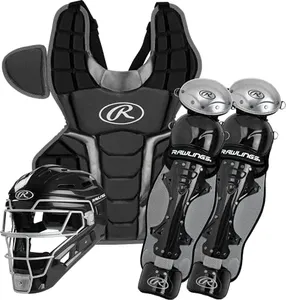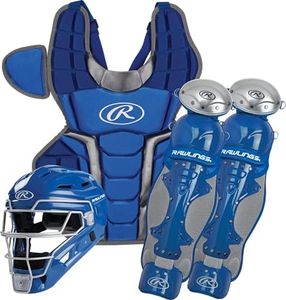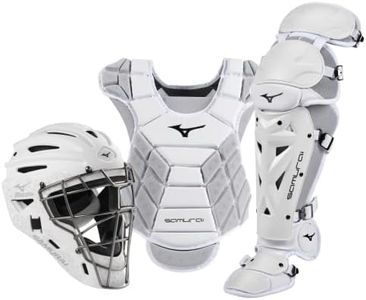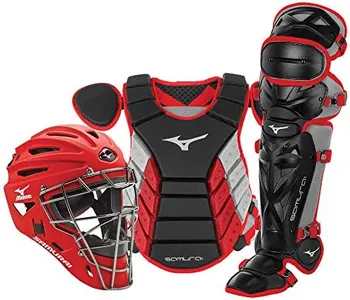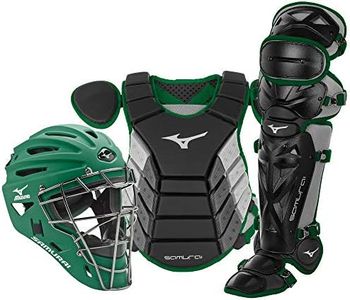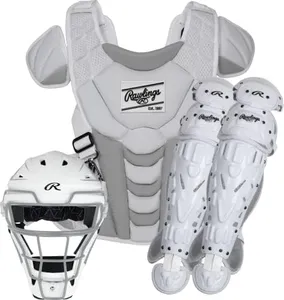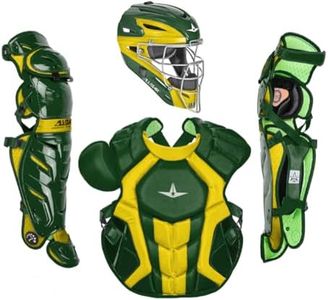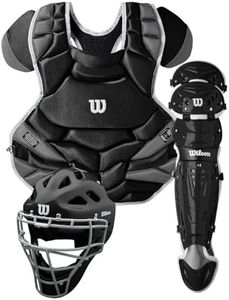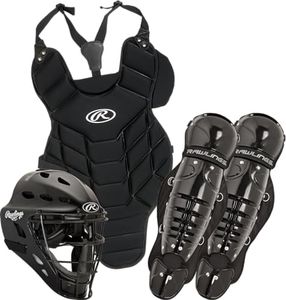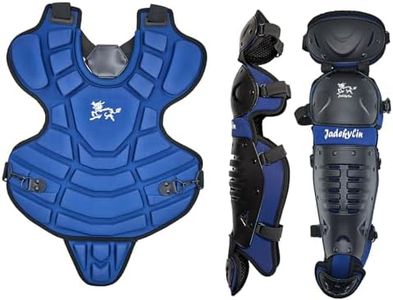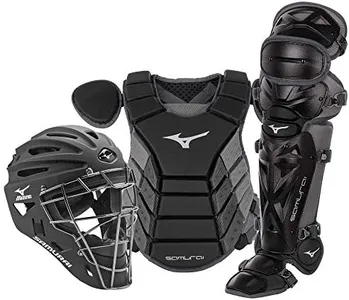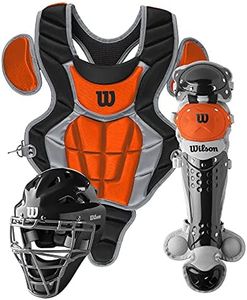We Use CookiesWe use cookies to enhance the security, performance,
functionality and for analytical and promotional activities. By continuing to browse this site you
are agreeing to our privacy policy
10 Best Catchers Gear Sets
From leading brands and best sellers available on the web.Buying Guide for the Best Catchers Gear Sets
Choosing the right catcher's gear set is important for both safety and performance on the field. The gear is made to protect key parts of the body from pitched balls, wild throws, and even base runners. A good set will help you feel safe and comfortable so you can focus on your game. When shopping, pay attention to protection, fit, comfort, durability, and how the set matches your level of play. Understanding the main features and choosing the right specifications will help you make an informed decision.Protection LevelThe protection level of catcher's gear refers to how well it can absorb impact and shield you from injury. It is important because catchers are constantly exposed to fast pitches and potential contact with runners or bats. Gear sets generally come in youth, intermediate, and adult protection levels, which match the intensity and speed of the leagues they're meant for. Youth sets are for younger players and focus on lighter protection and smaller sizing; intermediate sets offer a step up and are made for older kids or young teens; adult sets provide the most protection and are designed for high school players and up. Choosing the right level depends on your age and competition level—always pick a set that matches the speed and intensity of the games you play.
Fit and SizingFit describes how securely and comfortably the gear fits your body. Proper fit is crucial because loose gear can move during play, leaving you exposed, while gear that's too tight can restrict movement and be uncomfortable. Manufacturers usually size chest protectors, leg guards, and masks by age or by general measurements (height, chest size, shin length). Youth gear is for smaller players, intermediate for pre-teens and young teens, and adult for bigger players. Measure your body and consult each product's size chart for best results. Always choose gear that fits snugly without pinching or leaving gaps—comfort and safety are both key.
Comfort and PaddingComfort and padding determine how enjoyable the gear is to wear over long periods. Good padding cushions impacts and can help prevent bruises, while breathable liners or ventilation keep you cooler behind the plate. Some sets have extra padding in high-impact areas like the chest, knees, or shoulders. For players who spend a lot of time catching, more padding and soft interiors can make a big difference. Consider how much time you’ll spend in the gear and whether you want upgraded comfort features for extended use.
Durability and MaterialsDurability refers to how well the gear holds up to repeated use, sweat, weather, and impact. Catcher's equipment is usually made from tough plastics, metal hardware, and thick foam padding. Higher-end sets often use more advanced materials and reinforced construction. For frequent players or those in competitive leagues, gear with strong stitching, hard shells, and tough straps is important since it’s exposed to hard use. If you play less often or in lower-speed leagues, basic materials will do, but always check you're getting something built to last through the season.
AdjustabilityAdjustability describes how easy it is to customize the gear’s fit. Look for sets with adjustable straps, buckles, or ergonomic designs. Better adjustability allows you to fine-tune the fit for comfort and movement, and to make quick tweaks if you grow or add more layers for cold weather. If you're still growing or want to share gear among multiple players, highly adjustable sets are easier to adapt to different body shapes and sizes.
WeightWeight concerns how heavy the gear feels when worn. Lighter gear is easier to move in and may feel cooler, which is ideal for younger players or those who value mobility. Heavier gear often means more padding and protection, which is better for those facing faster pitches or more physical play. Depending on your age, strength, and level of play, balance weight and protection to match your comfort and safety needs.
